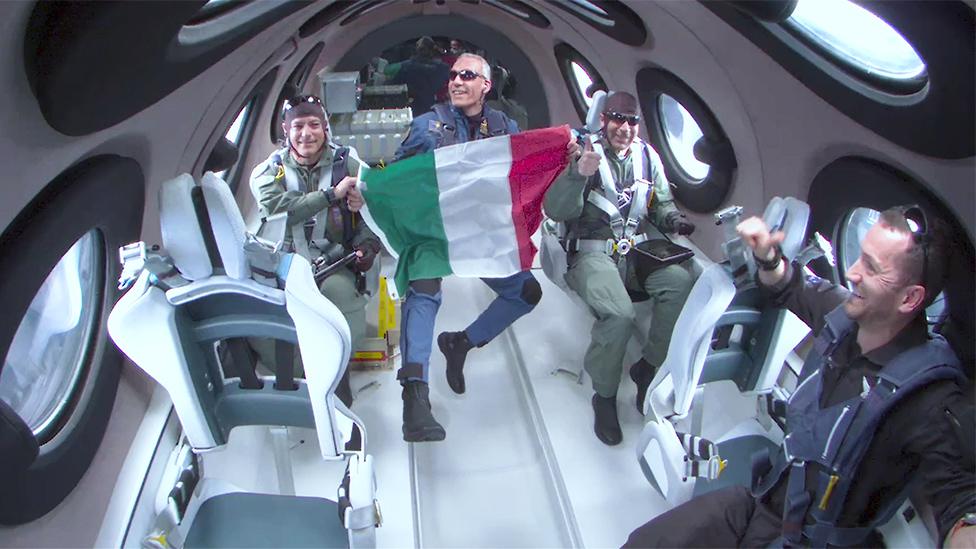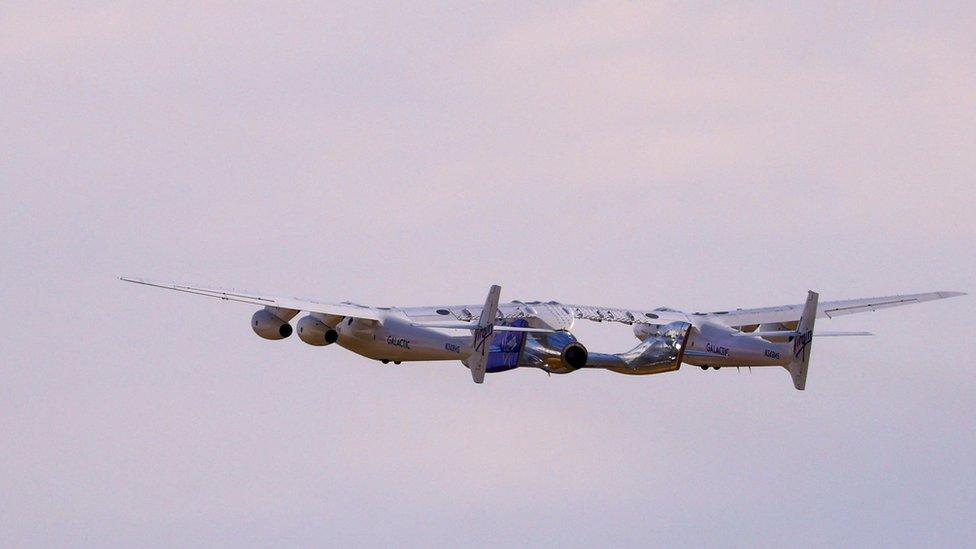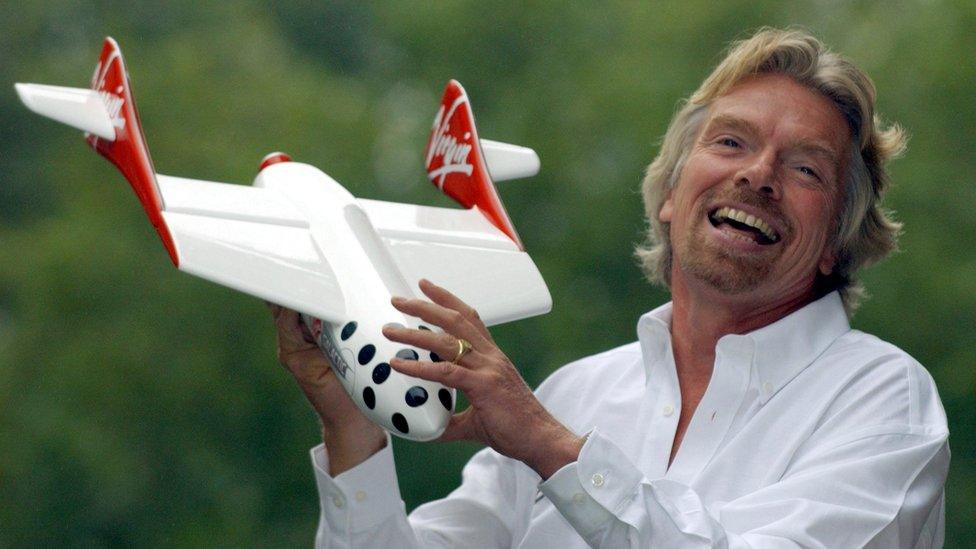Virgin Galactic: Sir Richard Branson's rocket plane enters commercial service
- Published
Watch: Inside Virgin Galactic's first commercial rocket ride to space
It's taken just shy of 20 years but Sir Richard Branson has finally begun commercial operations with his Virgin Galactic rocket plane, Unity.
The vehicle soared high over the New Mexico desert on Thursday to enable three Italians to conduct science experiments in weightless conditions.
It was the first "purchased" mission, as opposed to just a test flight.
Sir Richard will now begin sending up the 800 or so individuals who've bought tickets to ride on Unity.
The 72-minute mission took off from Spaceport America at 0830 local time (1430 GMT) and was livestreamed around the world.
Just under an hour into the mission, after reaching an altitude of 44,500ft (13,600m), the carrier plane, Eve, then released Unity to ignite its engine and boost up to the edge of space. At the top of its climb, the rocket plane was at 279,00ft (85km).

Thursday's flight reached a height of 279,00ft (85km)

The Italian members of the team aboard Unity hold up their country's flag in space
US multi-millionaire Dennis Tito became the world's first ever space tourist in 2001, paying a reported $20m; and more recently Jeff Bezos' space company Blue Origin beat Virgin Galactic in the race to take paying passengers on short hops above the atmosphere.
The Amazon founder has a rocket and capsule system he calls New Shepard. It's a different approach to Unity but provides a similar flight experience.
Some of Virgin Galactic's ticket holders have been waiting over a decade to get their chance to visit the edge of space; and most will have a long wait still.
Unity can carry only a handful of passengers at a time, and with a mission rate of one outing per month it will take a while to work through the backlog.
The pace won't improve until Virgin Galactic introduces a new class of rocket planes that are expected to make their commercial debut in 2026. These vehicles will have a flight cadence of once per week.
After Thursday's mission, Michael Colglazier, CEO of Sir Richard's company, said: "This historic flight was our first commercial flight and our first dedicated commercial research mission - ushering in a new era of repeatable and reliable access to space for private passengers and researchers."

A large aeroplane called Eve was used to carry Unity to launch altitude
Their introduction will be vital also for getting Virgin Galactic to profit.
Thursday's mission was purchased for the Italian Air Force and the Italian National Research Council.
Col. Walter Villadei, Lt. Col. Angelo Landolfi, and engineer Pantaleone Carlucci oversaw a range of experiments during their flight, including a study of how weightlessness affects the mixing of liquids and the behaviour of biological cells.
The trio were accompanied in the passenger cabin by company astronaut instructor Colin Bennett; and up front, at Unity's controls, by pilots Mike Masucci and Nicola Pecile.
Virgin Galactic was founded in 2004 to exploit the technology built into SpaceShipOne. This was a small, experimental, privately funded rocket plane that won a $10m prize for flying to space twice within two weeks.

In 2004, Sir Richard thought his spaceliner service could start in 2007
Back then, Sir Richard thought he could introduce a passenger spaceliner based on the SpaceShipOne concept by 2007.
But the engineering challenges were far greater than anyone had anticipated, and the project very nearly folded when the first prototype vehicle, called Enterprise, broke up during a test ascent in 2014, killing one of the two pilots on board.
It wasn't until December 2018 that Virgin Galactic got the successor, Unity, above 80km - the altitude regarded as "outer space" by some organisations.
Sir Richard himself finally took up a seat aboard the plane in July 2021 for a flight experience he described as "extraordinary".
Thursday's mission was designated "Galactic 01" by the California-based company. Galactic 02, which will fly the first of those patient, ticketed passengers, is scheduled for August.
The advertised price for a ride on the rocket plane has been as high as $450,000 (£350,000).

Unity is a sub-orbital vehicle. This means it can't achieve the velocity and altitude necessary to keep it up in space to circle the globe.
The spaceship is designed to give its passengers stunning views at the top of its climb, and allow them a few minutes to experience weightlessness.
Unity is first carried by a much bigger aeroplane to an altitude of about 15km (50,000ft), where it is released. A rocket motor in the back of Unity then ignites to blast the ship skyward.
The maximum height achievable by Unity is roughly 90km (55 miles, or 295,000ft). Passengers are allowed to unbuckle to float to a window. Unity folds its tailbooms on descent to stabilise its fall, before then gliding home.

